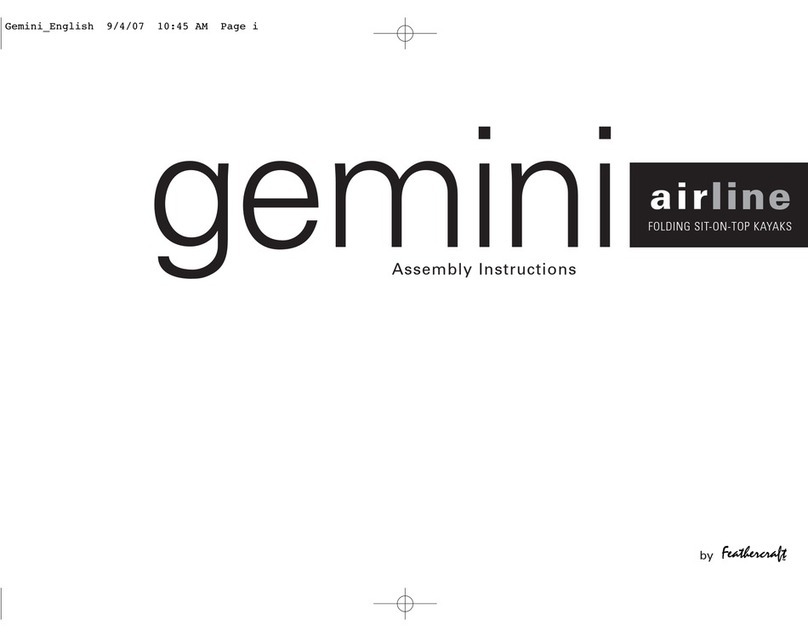Kayaking Safety
PLEASE READ CAREFULLY!
Kayaking can be hazardous and can involve the risk of serious
injury or death. Kayakers are responsible for obtaining appro-
priate instruction in paddling skills, equipment safety, water
safety, rescue and first aid. It is strongly recommended that
you obtain training in kayaking safety from a qualified and
experienced kayaking instructor.
The various components of Feathercraft kayaks are subject
to wear, breakage and failure. This type of damage can lead
to accidents resulting in serious injury or death. It is your
responsibility to maintain your kayak in excellent condition.
Disassemble your kayak completely at least every two
months. Re-lubricate the framework and inspect for signs of
wear or failure. Any worn, damaged or broken parts must be
repaired or replaced. If you have any doubts or concerns
about the condition of your Feathercraft kayak, contact your
dealer or Feathercraft Products Ltd.
Kayak safety training should include the following topics:
1. Paddling skills. Paddling techniques need to be
practiced in various water conditions. Maneuvering
a kayak through rough seas, currents and tidal
zones is quite different from paddling on flat water.
2. Hypothermia. The greatest danger to a kayaker is
hypothermia or cold water immersion. Protection
against hypothermia involves more than simply
wearing the appropriate protective clothing. It
involves all aspects of kayak safety.
3. Know Your Kayak. Your safety on the water is
dependant on all components of your kayak func-
tioning perfectly. You must inspect your kayak for
signs of wear or failure before setting off on every
trip, including seams, hatches, spray skirt, rudder
and hull.
4. Spray Skirt and Safety Sock. All Feathercraft kayaks
come equipped with a spray skirt and safety sock
(except the Klondike, where the socks are optional,
and the Air Line Sit-on-Top models). These are
important safety items, but you must be fully famil-
iar with their use before an emergency arises.
airline jet stream 1




























